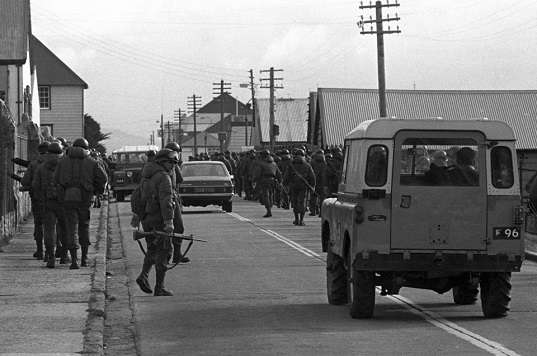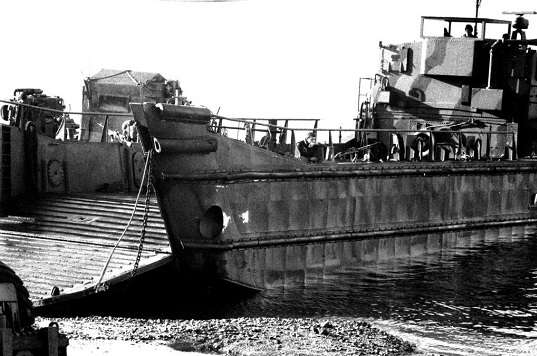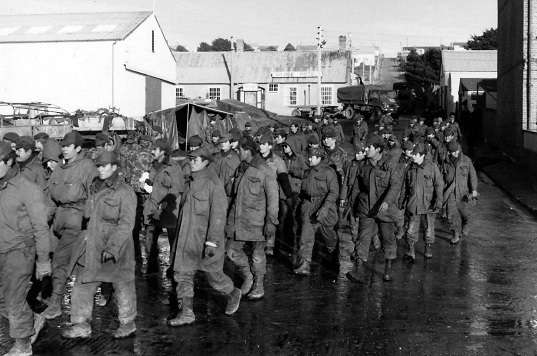A military war known as the Falklands War, commonly referred to as the Falklands War or Falklands Crisis, took place between April and June 1982. Argentina and the United Kingdom were at an undeclared war over the Falkland Islands, South Georgia, and the South Sandwich Islands, which are British overseas possessions in the South Atlantic. The islands were long claimed by Argentina, and the conflict resulted in war.
Below are six significant dates during the conflict’s 74-day duration, which began on Friday, April 2, 1982, and ended on June 14, 1982.
1. Argentine Invasion (2 April)

Argentine Soldiers in Stanley
After the collapse of diplomatic ties between Argentina and the UK. When some Argentine metal scrap workers landed on the British colony of South Georgia on March 19 and hoisted the Argentine flag, tensions escalated. Leopoldo Galtier gave the order to invade and occupy the Falkland Islands shortly after, on April 2. Soon after, South Georgia and the South Sandwich Islands were also conquered by Argentina.
2. British Task Force Set Sail (5 April)

HMS Broadsword alongside HMS Hermes
Due to the enormous distance separating the Falkland Islands from the United Kingdom, the British organized diplomatic pressure against Argentina quickly and depended on a naval task force. They didn’t think twice about assembling an armed task team. Three nuclear-powered submarines had already been sent out on April 2, and on April 5, the main force, which was composed of more than 100 ships and was focused on the aircraft carriers HMS Hermes and HMS Invincible, made sail. The ships would take about three weeks to get to the South Atlantic.
3. British Troops Re-take South Georgia (25 April)

HMS Antrim
A country-class destroyer named HMS Antrim made her way to South Georgia’s coast on April 21 and started conducting reconnaissance. The Argentine submarine ARA Santa Fe (balao-class) came under attack as soon as it was discovered. The submarine returned to base after suffering significant damage. After that, on April 25, the Special Boat Service (SBS), Special Air Service (SAS), and Royal Marines soldiers arrived in South Georgia and retook command of the garrison without exchanging a single shot.
4. British Troops Land at San Carlos (21 May)

HMS Antelope Exploding
The British attempted an audacious 4000-troop landing at San Carlos on the night of May 21. From that point forward, the Argentine bombardment of the region was so intense that the British gave it the nickname “Bomb Alley.” Four British ships, the commerce ship Atlantic Conveyor, the destroyers HMS Coventry and HMS Ardent, were sunk during their attacks. The Argentines lost twenty-one planes during the attacks. The conflict continued until May 25. The British military came under increased political pressure as a result of the ship losses.
5. Battle for Darwin and Goose Green (28 May)

Falklands landing craft
The Argentine base at Goose Green and Darwin was attacked by British paratroopers early on May 27. The largest group of Argentine infantrymen outside of Stanley, the island’s capital, defended the airstrip at Goose Green. The Falklands War’s longest and toughest combat is this one. After two days and a night of fierce combat, the British finally took control of Goose Green on May 28. The British troops could begin moving into Port Stanley after taking back control of Goose Green.
6. Stanley Liberated (14 June)

Argentine prisoners of war – Port Stanley
The final attack on Port Stanley was conducted by British soldiers following the landings in San Carlos and Goose Green. The final assault was carried out on June 11 night. In the vicinity of Port Stanley, three high-ground positions were simultaneously attacked by British soldiers. These hills were in British hands after a night of warfare. The second phase of the assault was against Argentine positions at Wireless Ridge and Mount Tumbledown on the evening of June 13. When Argentine resistance broke down on June 14, the 2nd Para invaded Port Stanley, where a cease-fire was announced and the Argentine forces surrendered.
